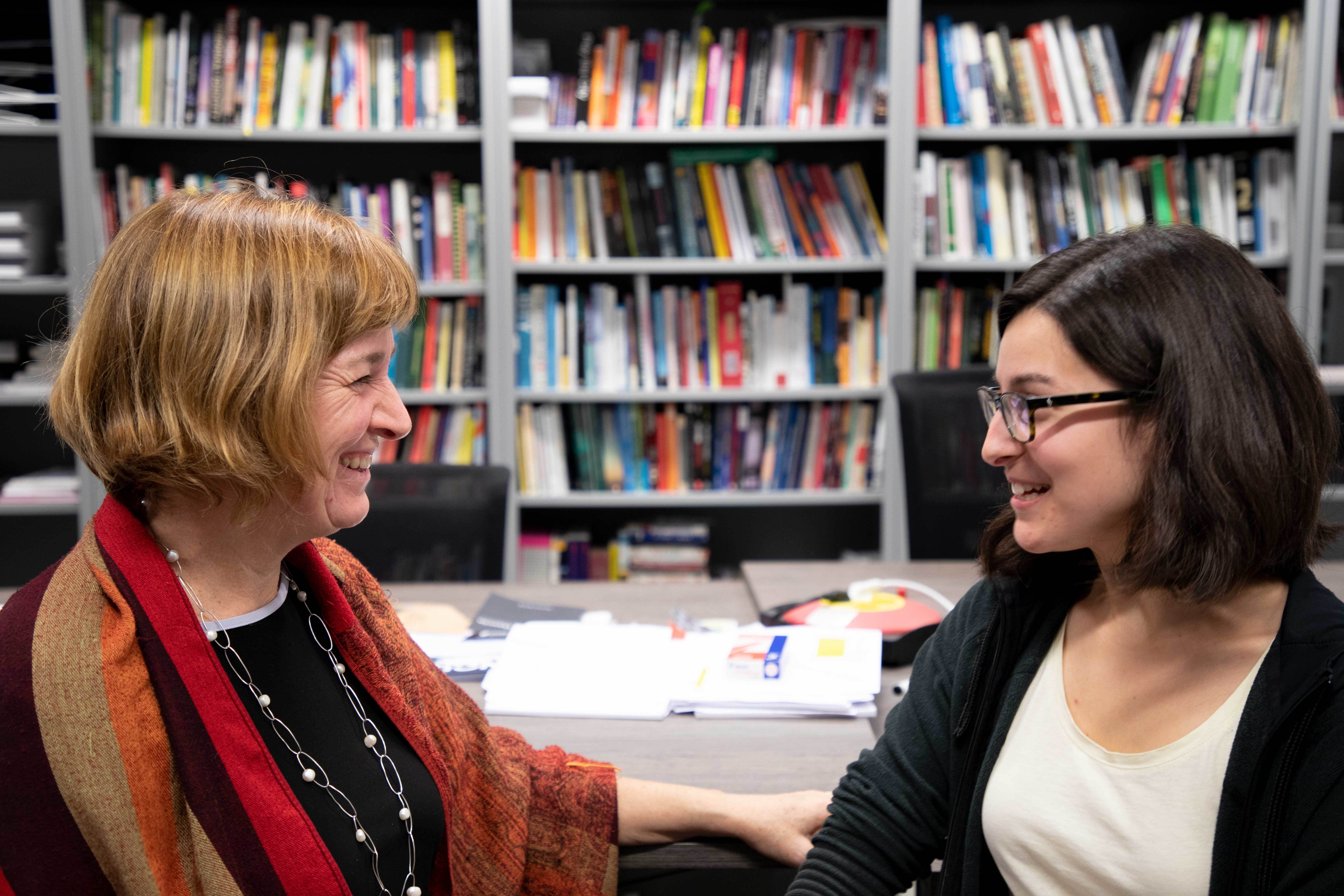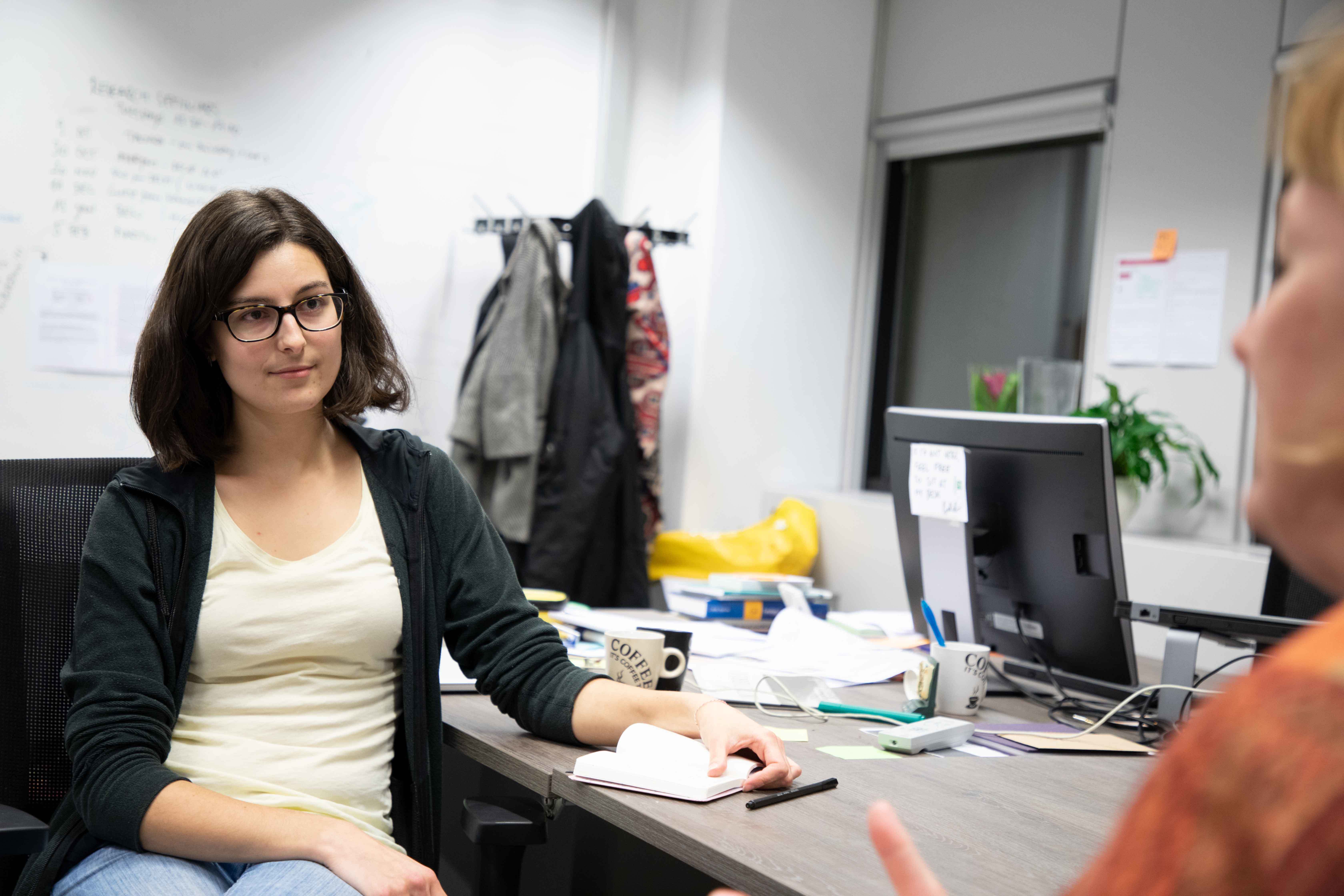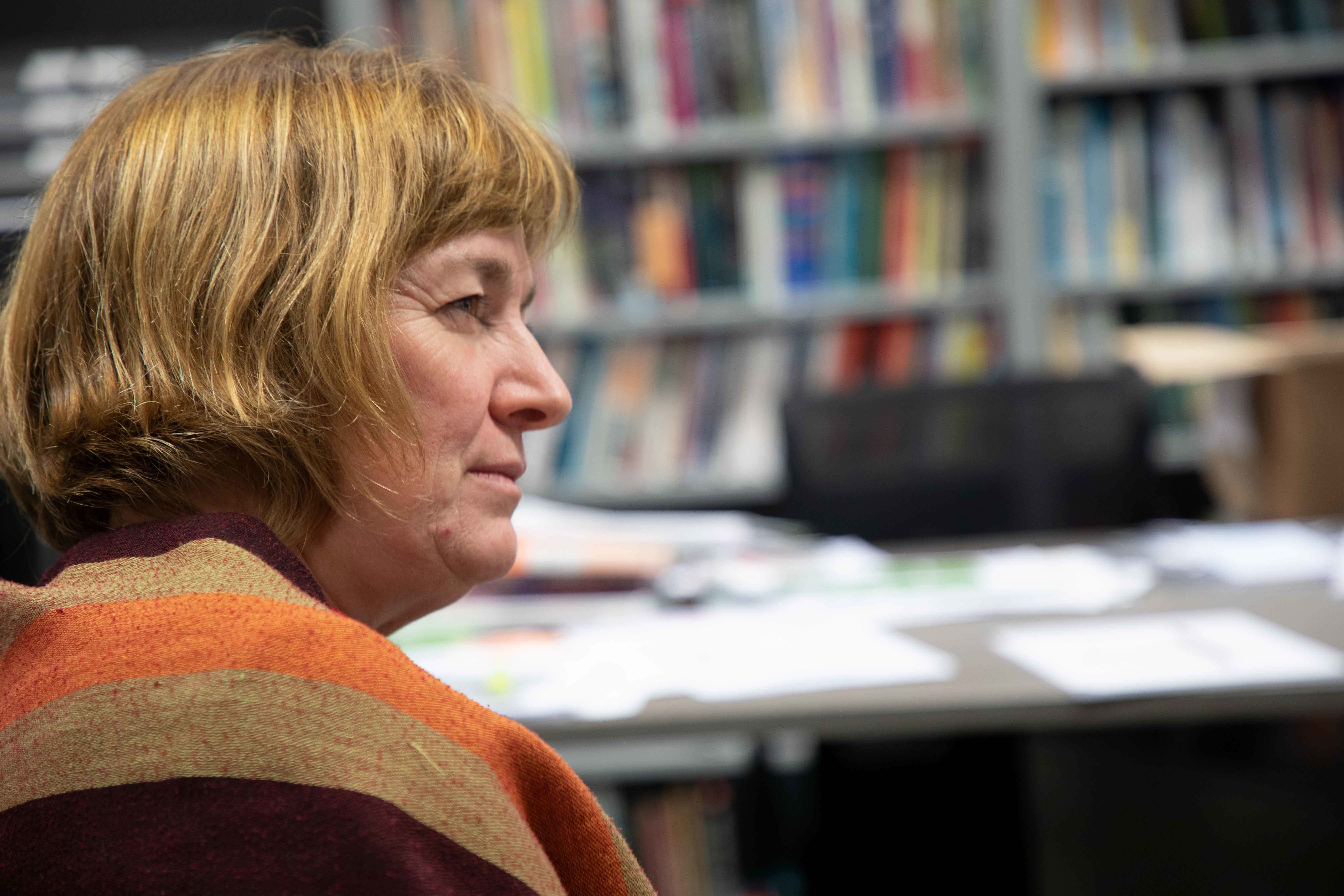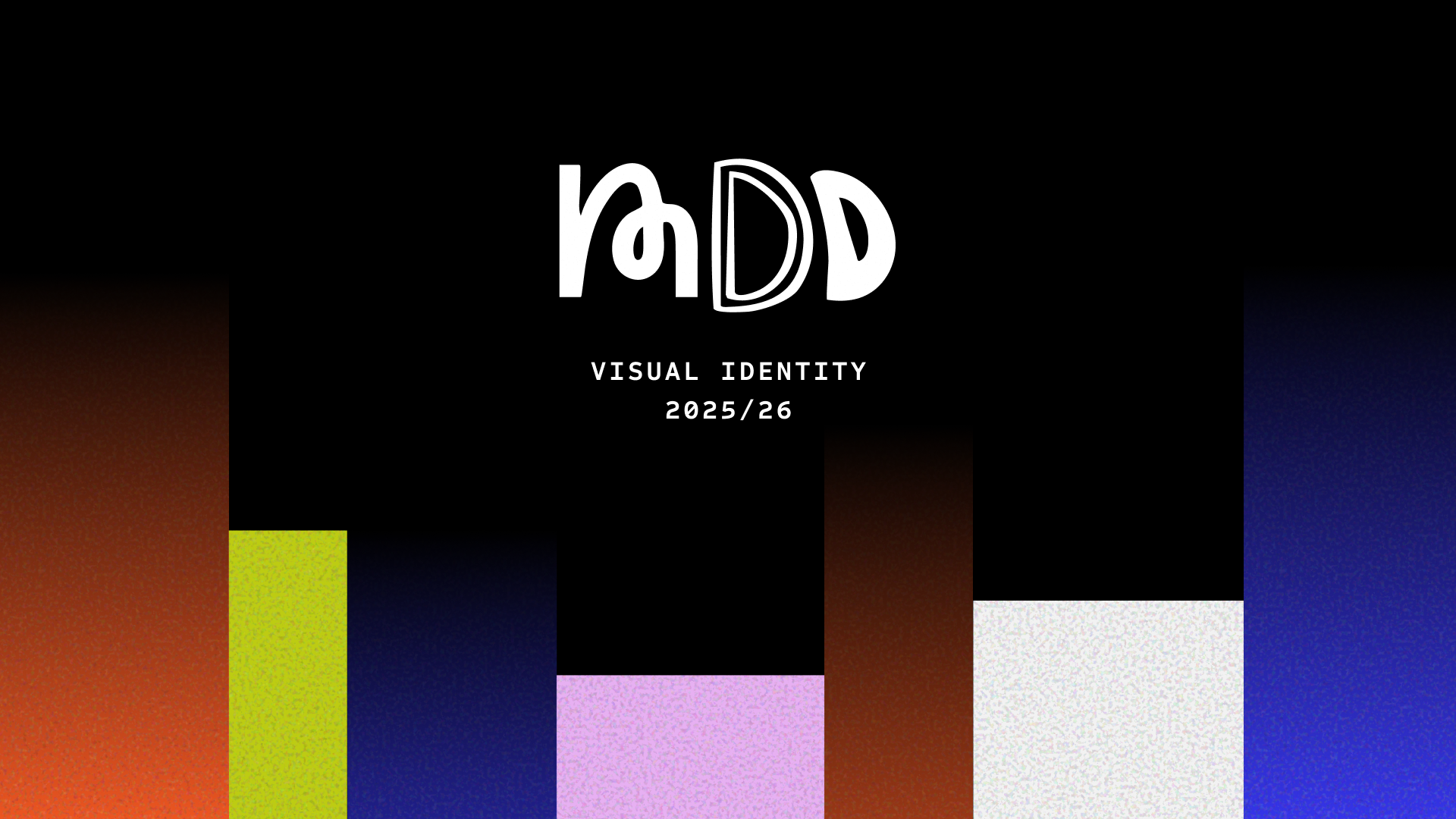Kristina Höök: “Our Bodies Are Completed By Culture”

Swedish Designer Kristina Höök talks gender, culture, and design to Master Digital Design student Maria Soliman.
It’s a fascinating time to be alive. The era of wearable technology, data-driven interfaces, and kinetic apps is here. But we’re also in the middle of the #MeToo era, when we reflect on the position of women in society and, in particular, how much of a say the female voice has in the surrounding world.
And what other job has more of an impact in the way we see our world than a designer?
In her book, Designing with the Body, Kristina Höök presents new methodologies to designers to reflect on how we interact with new tech developments when our bodies are so different.
Maria Soliman, young designer and student at the Master Digital Design, sat down with her to quiz her about her own experiences in a field that remains largely dominated by men.
M: Do you consciously make a difference between the male and the female body and try to address both?
K: Yes. When you design with the body, there is no way you can avoid recognising that bodies are different. Male and female of course is different but also old, young, abled bodies, disabled bodies, small, big, bodies with pain, all of these things become so strongly at the foreground.
Once you’re designing very close to who we are then suddenly all these differences come up. Somaesthetic design allows me to be aware of that and to design with that rather than worry about how to find the normal body because there isn’t any normal body. So gender in particular - and there are not only female or male but all the other possibilities of enacting gender - is partly cultural, partly biological. I think we need to work with both in our design processes. In a way our bodies are completed by culture. The way we sit, you and me, this is the female way of sitting and if we had been brought up in a different culture we would take more space. It’s a cultural thing. For me that is interesting. Politics are enacted on the body. Gender is enacted on the body. We have such an important role when we design technology to care about this. Because it’s about power and politics.

M: Did you encounter any difficulties throughout your career that you think might have been easier for a man in the same position?
K: I feel like I’ve been positively discriminated. I’ve had many opportunities very early on because I was female. There was a lot of affirmative action in Sweden. For example, you can’t examine a PhD without having a female on the thesis committee. You cannot have a discussion on the radio or television with only males. You have to have a woman. So, I took some of those opportunities early on. I always felt a bit like I am the odd one out and the strange one. But then step-by-step this has changed. I don’t know if I feel like I’ve been discriminated against. Discriminated for or something, yes.
Perhaps today I feel like the world is allowing me to be as female or male or granny-like that I like
M: Since you’re in the design field, where do you see that women are taking a bigger part in designing?
K: I haven’t really thought about it so much. I haven’t really thought about it so much because it has become so mundane in a way to me. In my research group I think it’s fifty-fifty? I don’t even count anymore. Sometimes we joke that it’s a matriarchy because I’m the head of the group and a lot of the other senior researchers are female and the younger ones are male. And my colleagues are working with stuff like menopause or female health, looking at yourself and your vagina and take knowledge in design and it’s absolutely accepted. To me it’s relaxing that I don’t have to care about that anymore.
I think what we are not succeeding with is getting people from underprivileged suburbs in Stockholm. We’re not getting the most recent immigrants to study at KTH [the research centre where Höök works]. Their perspective is not there. So, I find this now more important than whether you’re male or female. Especially today with the political situation we have across the world. We fail to involve people in building society and creating design. I mean people from all different parts of society.
M: Where do you think we’re heading?
K: There’s a lot of stuff that worries me about the design work that we’re doing in computer science and in digitalisation of society because it’s removing jobs. And we’re doing that without considering what new interesting jobs might be created and for whom and what kind of education you need in order to get that job and so on. There is going to be a privileged class of people, who are still going to get jobs and benefits in society. But then there is going to be a big divide. There is a whole group in the middle that will be squeezed and they haven’t been squeezed before. And at the university and in general in society, we’re not talking about how to change our education, our system or our society to care about this. I think when I worked on recommender systems really early on, I didn’t realise that the consequences would be filter bubbles. I could have realised, we talked about it but I didn’t see that this was going to be influencing politics across the world. So how do we work with that?
Design, Computer science, digitalisation, AI, in all of those topics I think we need to talk way more about ethics, bias, the consequences of this kind of technology and the algorithms we’re bringing forth. And we don’t know how to do that. The complexity of the problem is just so big that we don’t understand it. It’s a global problem and it’s not easy for us to think at that scale. Thinking at a community level like a hundred people or so, yes we can do that. But thinking about a whole country is hard. Thinking globally is even harder.

M: My bachelor was more technically oriented and we were not many girls in the class. From your experience, how did the classrooms change from when you started to now?
K: So I studied from 1983, I did computer science and we were six per cent women. And to be honest, I felt that I had to adjust a lot. There are many reasons why you need to change when you start studying at university. You are trying to become an adult, you’re acquiring a new language, and a new way of analysing. I went along with this but I held back a lot of classical feminine attributes. I stopped dressing in dresses, I lowered my voice. I still do that I lower my voice in order for you to take me seriously. [Talking in high pitch] Because if I talk up here and I am a bit more feminine then you’re not going to listen to me, right? [Back to normal voice] So I lowered my voice, I changed my way of dressing, I took away all the interesting clothes and interesting what not. And then it took me many years to realise that I had cut off bits and parts of myself to fit in with the role that was very narrow and very boring [laugh]. And then step-by-step I could conquer that back again. I hope and believe that this is not what you have to go through. Because of course you have to adjust to a role, you’re going to be a designer, and a designer has certain traits, right? But hopefully it’s not cutting your wings or cutting your expressions in a way where you don’t feel like you can be what you want to be.
I lowered my voice, I changed my way of dressing, I took away all the interesting clothes and interesting what not. And then it took me many years to realise that I had cut off bits and parts of myself to fit in
M: What about the students who were in your class - did you notice a change?
K: Yes I think I notice a change. And part of it has to do with that it’s become way more global, we have students from all over the world. A lot of stuff that I could do before, and everybody in the room would know the cultural connotations, I cannot do anymore. I have to think more about how different people in the room understand stuff.
I have a cousin who was working in Sweden for a while and then she decided she’s going to work in India. She’s working for IKEA and told me, “When I came to India and I started working as a boss and directing other people, it didn’t work. There were certain things I just couldn’t make happen. I was told ‘you look way too masculine, you need to look more feminine’.” So suddenly she started wearing all these colours and earrings and expressing herself in a more feminine way and that fitted in better with the stereotypes and then it worked. And she enjoys it, as well you know. So this is what I said before, our bodies are completed by culture.

M: Sweden, known for its design, is a country with a big focus on gender. Has that contributed to a more successful way to designing?
K: Maybe. I know for sure that design firms do have a lot of women and some of them are led by women. Whether it actually changes design or not I don’t know. I think that a lot of that is also culture. What is it to be a woman? There are certain things that are biologically different between men and women but what are the things that we are enculturated to believe that we should be doing and therefore can show in our designs and what are the things that come out of the biological differences? So, what you see is probably more Scandinavian culture than necessarily male / female.
It’s a very egalitarian society. Like the difference between the most paid person and the least paid person is not so big and there are huge taxes on high incomes. Everybody should live a good life. I think that is a strong value that comes through. It’s not too good, not too bad, it’s in between. If you look at IKEA for example, if you go to the city where they do the design work, where their headquarters is, a small town in the middle of nowhere and they have this big house that they call the democratic design centre. This is their ideal; they’re designing for everyone, for the many people. And there are a lot of women, a lot of men, a lot of different cultures because they really believe that they should be designing for everyone. That is a strong value in Sweden. And then you make money out of that as well right? So it works!
Don’t go into a workplace where you can feel that it’s slightly hostile.
M: What’s your advice for young women who are going to start a career in tech or design?
K: You need to look for a good boss. So whether that boss is male or female doesn’t matter so much as their attitude towards women. I think that it matters what the CEO thinks. In my case I was lucky, I had a few bosses that loved women and were like always like ‘Kia do you want to go on stage, do you want to do this do you want to ...’, you know? I think we’re taught to be humble and to not step to the front, so you need somebody who gives you a little push right? ‘You can be on stage you can do this, you can do that’. And I was lucky to have bosses who liked women. That I would look for. Don’t go into a workplace where you can feel that it’s slightly hostile.

